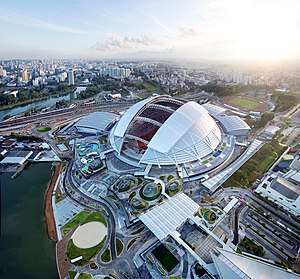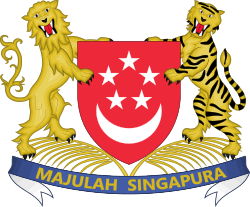Culture of Singapore
The culture of Singapore or Singaporean culture has changed greatly over the millennia. Its contemporary modern culture consists of a combination of Asian and European cultures, mainly by Malay, South Asian, East Asian, and Eurasian influences. Singapore has been dubbed as a country where "East meets West", "Gateway to Asia" and a "Garden city".[1]
| Part of a series on the |
| Culture of Singapore |
|---|
 |
| History |
| Topics |
|
| Research |
| Symbols |
|
 Life in Singapore |
|---|
Singapore's indigenous culture originates primarily from the Austronesian people that arrived from the island of Taiwan, settling between 1500 to 1000 BCE. It was then influenced during the Middle Ages primarily by multiple Chinese dynasties such as the Ming and Qing, as well as by other Asian countries such as the Majapahit Empire, Tokugawa shogunate, and the Ryukyu Kingdom. In the near-contemporary history after the British arrived, Singapore was also influenced by western countries. Repeated influence, absorption and selection in various ways have added to the development of a distinct and unique culture.
History
Singapore history dates back to the third century. It was a vassal state of various empires before being reestablished and renamed by Sang Nila Utama. The island was ruled by various sultanates until 1819, when the British came to the island and set up a port and colony. During British rule, the port of Singapore flourished and attracted many migrants. Singapore was under Japanese occupation during the World War II. After the war concluded, Singapore was self-governed before joining the Federation of Malaysia. Singapore became an independent republic on 9 August 1965.
It has a diverse populace of over 5.47 million people[2] which is made up of Chinese, Malays, Indians, and Eurasians (plus other mixed groups) and Asians of different origins, such as the Peranakan people, descendants of Chinese immigrants with Malay or Indonesian heritage.[3]
National character
Meritocracy
"The system of meritocracy in Singapore ensures that the best and brightest, regardless of race, religion and socio-economic background, are encouraged to develop to their fullest potential. Everyone has access to education, which equips them with skills and knowledge to earn a better living."[4] Indeed, the Education in Singapore ensures that primary education is compulsory for all children of age 7 to 12. Parents have to apply for exemptions from the Ministry of Education in Singapore to excuse their children under this compulsory rule with valid reasonings.
Racial harmony
Singapore is a secular immigrant country. The main religions in Singapore are Buddhism, Christianity, Islam, Taoism, and Hinduism. Respect for different religions and personal beliefs is heavily emphasised by the government.[5]
To demonstrate the importance of imparting racial harmony knowledge to the youths, schools in Singapore celebrate Racial Harmony Day on 21 July annually. Students come to school dressed in different ethnic costumes, and some classes prepare performances regarding racial harmony.
Democracy, peace, progress, justice and equality
The concepts of democracy, peace, progress, justice and equality are enshrined as stars in the Singapore national flag. Freedom in the World ranked Singapore 4 out of 7 for political freedom, and 4 out of 7 for civil liberties (where 1 is the most free), with an overall ranking of "partly free". Reporters without Borders ranked Singapore 153th out of 180 countries in their Press Freedom Index for 2015.[6]
Cultural policy
Singapore maintains tight restrictions on arts and cultural performances. Most artistic works have to be vetted by the government in advance, and topics that breach so-called out of bounds markers (OB markers) may not be permitted. While the OB markers are not publicly defined, they are generally assumed to include sensitive topics such as race and religion. Nudity and other forms of loosely defined "obscenity" are also banned. Singaporean film director Royston Tan has produced movies which challenge these policies, including a movie called Cut in reference to censorship of the arts.[7]
The country's first pre-tertiary arts school, School of the Arts, is now completed and stands along the country's prominent Orchard Road. Commenced in 2008, the school aims to provide an environment for nurturing young artists aged between 13 and 18 years. There has been much public rhetoric about liberalisation and its association with the development of a creative economy in Singapore. The response from artists, academics, public intellectuals, and civil society activists has ranged from strongly optimistic to deeply pessimistic, as reflected in the chapters written for edited book Renaissance Singapore: Economy, Culture, and Politics. The difference between what is "culture" and what makes up "the arts" has been a matter of some debate in Singapore.[8]
Ethnic areas
Singapore has several distinct ethnic neighbourhoods, including Katong, Kampong Glam, Geylang Serai, Chinatown and Little India.
Both Geylang Serai and Kampong Glam are the focal points of the Malays in Singapore.[9] A Malay Heritage Centre in Kampung Glam showcases the history and cultural exposure of the Malays,[10] who are indigenous to the land.[11] Both areas feature an annual month long Hari Raya Bazaar, during the fasting month of Ramadan. This is patronized by Malays and also other races.[12]
Katong is home of the Peranakans, and the neighbourhood's identity is shaped by its unique architecture – colourful two storey shophouses, colonial bungalows, intricate motifs and ceramic tiles. It was designated as a national heritage conservation area by the Singapore Government in 1993.
Little India is known and patronised by all races within the population for its thalis – South Indian "buffets" that are vegetarian and served on the traditional banana leaves. These neighbourhoods are accessible by public transport, especially by Mass Rapid Transit (MRT).
Singapore's Chinatown is an ethnic neighbourhood featuring distinctly Chinese cultural elements and a historically concentrated ethnic Chinese population. Chinatown is located within the larger district of Outram.
Ethnic enclaves from the British colonial era, akin to those seen in major cities in many Western countries, are largely non-existent. The remnant "enclaves" such as Little India, Chinatown and Kampong Glam are now mainly business hubs for their respective ethnic groups and preserved for historic and cultural reasons. The Housing Development Board enforces the Ethnic Integration Policy (EIP) to "preserve Singapore’s multi-cultural identity and promote racial integration and harmony" and sets proportions for each ethnic group in each housing estate.[13]
Cultural World Heritage Sites
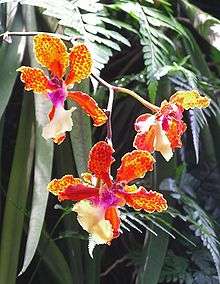
Founded in 1859 by an agri-horticultural society, the Singapore Botanic Gardens played a pivotal role in the country rubber trade boom in the early twentieth century, when its first scientific director headed research into the plant's cultivation. By perfecting the technique of rubber extraction which are still in use today as well as promoting its economic value to planters in the region, rubber output expanded rapidly. At its height in the 1920s, Singapore cornered half of the global latex production. Today, the Singapore Botanic Gardens is one of three gardens, and the only tropical garden in the world, to be honored as a UNESCO World Heritage Site.
Cuisine
Singaporean cuisine is also a prime example of diversity and cultural diffusion in Singapore. In Singapore's hawker centres, for example, traditionally Malay hawker stalls also sell Tamil food. Chinese stalls may introduce Malay ingredients, cooking techniques or entire dishes into their range of catering. This continues to make the cuisine of Singapore significantly rich and a cultural attraction. Singaporeans also enjoy a wide variety of seafood including crabs, clams, squid, and oysters. One favorite dish is the stingray barbecued and served on banana leaf and with sambal (chilli).

Festivals
The major public holidays reflect the mentioned racial diversity, including Chinese New Year, Buddhist Vesak Day, Muslim Eid ul-Fitr (known locally by its Malay name Hari Raya Puasa), and Hindu Diwali (known locally by its Tamil name Deepavali). Christians constitute a large and rapidly growing minority, and Christmas Day, Good Friday, and New Year's Day are also public holidays.
On August 9, Singapore celebrates the anniversary of its independence with a series of events, including the National Day Parade which is the main ceremony. The first National Day Parade, which was held in 1966, was held at the Padang in the city centre.
In 2003, the Esplanade – "Theatres on the Bay", a centre for performing arts, was opened. The Esplanade is also known as "The Durian", due to its resemblance to the fruit. The Arts House at Old Parliament Lane has also been supportive of local performing arts in recent years. Nanyang Academy of Fine Arts (NAFA) and LASALLE College of the Arts are the two main arts institutions offering full-time programmes for the performing arts in Singapore.
Languages
Many Singaporeans are bilingual. Most speak Singaporean English and another language, most commonly Mandarin, Malay, Tamil or Singapore Colloquial English (Singlish). Singapore Standard English is virtually the same as British English in most aspects of grammar and spelling, though there are some differences in vocabulary as well as minor ones in spelling due to Americanisation; for example, the word 'swap' is commonly spelled 'swop', as is standard in The Straits Times.[14]
All Singaporeans study English as their first language in schools, under the compulsory local education system, and their mother-tongue language as their second language. Thus, most Singaporeans are effectively bilingual, especially the youths in today's society. There are four main languages in usage in Singapore. The 'national' language of Singapore is Malay. This is in recognition of the Malay people as the indigenous community in Singapore even though a majority of Singaporeans today do not speak Malay. Malay is used in the national anthem, national motto and military parade drill commands. Tamil is an official language as the majority of South Asians in Singapore are ethnic Tamils from South India and Sri Lanka. While most Chinese Singaporeans are descendants of southern Chinese migrants who spoke a variety of regional languages, it is the northern Chinese language of Mandarin that is official in Singapore, though dialects such as Hokkien and Cantonese are still prevalent in the older generation of Chinese.
Parks

Gardens and gardening have a special place in Singaporean culture as well as in politics. Historically this is all officially attributed to Lee Kuan Yew who apparently spearheaded this philosophy in 1963.[15] In a rare interview with Monty Don shown in the TV series Around the World in 80 Gardens, Lee Kuan Yew reveals that after visits to other big Asian cities such as Hong Kong and Bangkok he feared that Singapore would turn into another concrete jungle, and he decided that gardens and parks should be established everywhere and made this a priority of the government.
Popular culture
Music
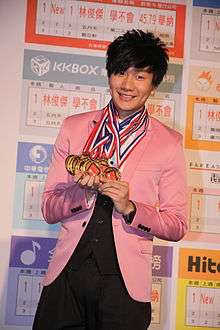
The music of Singapore has reflected the diverse influences that have shaped the country. Its various communities have their own distinct musical traditions: the Chinese people form the largest ethnic group in Singapore, with Malays, Indians, and smaller number of other peoples of different ethnicity as well as Eurasians. The different people with their traditional forms of music, the various modern musical styles, and the fusion of different forms account for the musical diversity in the country.
It has an urban musical scene, and is a center for pop, rock, punk and other genres in the region. The country has produced in the 1960s bands like The Crescendos and The Quests, right up to the new millennium with pop singers such as Stefanie Sun and JJ Lin. Folk music of Singapore includes the ethnic music traditions of the Chinese, Malay and Tamil communities. Singapore also has a lively Western classical music scene.
Literature
Singaporean literature comprises a collection of literary works by Singaporeans. It is written chiefly in the country's four official languages: English, Malay, Mandarin Chinese and Tamil.
While Singaporean literary works may be considered as also belonging to the literature of their specific languages, the literature of Singapore is viewed as a distinct body of literature portraying various aspects of Singapore society and forms a significant part of the culture of Singapore. Literature in all four official languages has been translated and showcased in publications such as the literary journal Singa, that was published in the 1980s and 1990s with editors including Edwin Thumboo and Koh Buck Song, as well as in multilingual anthologies such as Rhythms: A Singaporean Millennial Anthology Of Poetry (2000), in which the poems were all translated three times each into the three languages. A number of Singaporean writers such as Tan Swie Hian and Kuo Pao Kun have contributed work in more than one language. However, such cross-linguistic fertilisation is becoming increasingly rare and it is now increasingly thought that Singapore has four sub-literatures instead of one.
Business Times (Singapore) has written that writers in Singapore can also be "highly experimental", and quoting the poet, Cyril Wong, literature in the country "doesn't necessarily mean writing that's on the page. It can be writing that is performed or even writing that is translated into video or images or photographs...including writings that are less tangible. Writings that are expressed through other mediums."[16] Singaporean literature has even begun to make its mark on the international stage, with Sonny Liew's graphic novel The Art of Charlie Chan Hock Chye winning three Eisner Awards and the Pingprisen for Best International Comic in 2017.[17]
Media
The communications media of Singapore include numerous television and radio networks as well as newspapers and magazines. For the most part, television networks were established based on capital investments by existing radio networks. Variety shows, serial dramas, and news constitute a large percentage of Singapore evening shows.
Murals

Murals in Singapore have been encouraged by the government in recent years as part of Singapore's efforts to recast itself as a "Renaissance City" and global arts city. These public art works require permission from the government; unauthorized public art and graffiti are subject to legal penalties under the Vandalism Act in Singapore.[18] Many murals depict scenes common to Singapore's cultural heritage.[19]
In 2013, Singapore launched the PubliCity program, which designated two blank walls along the Rail Corridor for urban art. The Rail Corridor, once a 24 kilometres (15 mi) railway line between Singapore and Malaysia, had closed in 2011. Artwork along the walls of the Rail Corridor is curated by RSCLS, a local art collective. In 2014, the National Arts Council set up the Public Art Trust which provided both a public spaces program in which artists' proposals and willing site owners are matched up, as well as six walls at Goodman Arts Centre, Aliwal Arts Centre, and *Scape youth centre for practice spaces.[18]
Performing arts
Singapore is also known as a cultural centre for arts and culture, including theatre and music.
Stand-up comedy
Singapore has a well established stand-up comedy scene with dozens of active rooms. The comedy rooms in Singapore are weekly, starting with Comedy Masala[20] on Tuesdays, Talk Cock Comedy[21] on Wednesdays and Comedy Hub Singapore[22] on Mondays and Thursdays. Every month, The Comedy Club Asia features leading international comics such as Shazia Mirza and Imran Yusuf. Comedy Masala also brings in international comedians, such as Paul Ogata.[23] Kumar, a drag queen who has performed in Singapore for more than 17 years, is one of Singapore's leading stand-up comedians.[24]
Sports
Singaporeans participate in a wide variety of sports for recreation as well as for competition. Popular sports include football, basketball, cricket, rugby union, swimming, badminton, and cycling. Many public residential areas provide amenities like swimming pools, outdoor spaces (football, basketball courts, running tracks)[25] and indoor sport centres, with facilities for badminton, squash, table tennis, gymnastics, indoor basketball and volleyball, among others.
Since Singapore is an island, Singaporeans also enjoy many water activities including sailing, kayaking and waterskiing. There is also a number of avid recreational scuba divers, a prominent diving spot being the southern island of Pulau Hantu, famous for its coral reefs.
Football is arguably the most popular spectator sport. Singapore has its own professional football league, known as the Singapore Premier League. Launched in 1996, it consists of 10 teams competing against one another. Each team has its own home stadium, which are mostly located in heartland towns. In 1998, 2004, 2007 and 2012, the Singapore national football team were champions in the AFF Championship, the premier football competition in Southeast Asia.
Singapore's athletes have performed well in regional and international competitions, especially in table tennis, badminton, sepak takraw, bowling, sailing, silat, swimming and water polo. To date, Singapore has won a total of one gold, two silver and two bronze Olympic medals. Singapore has also amassed a total of 41 gold, 59 silver and 117 bronze medals at the Asian Games.
At the 2016 Summer Olympic Games, Singaporean swimmer Joseph Schooling was the gold medalist in the 100m butterfly, gaining Singapore's first-ever Olympic medal in swimming.[26] His winning time of 50.39 seconds is a National, Southeast Asian, Asian record and broke Michael Phelps' record of 50.58 seconds at the 2008 Summer Olympic Games.
Religion
Religion in Singapore is characterized by a diversity of religious beliefs and practices due to its diverse ethnic mix of peoples originating from various countries.
The most followed religion in Singapore is Buddhism, with 33.2% of the resident population declaring themselves as adherents at the most recent census (2015). A large majority of Buddhists in Singapore are Chinese, with 42.29% of the ethnic Chinese population in Singapore declaring themselves as Buddhists at the most recent census (2015). However, there are also sizeable numbers of non-Chinese ethnic groups in Singapore that practise Buddhism, such as the Japanese, Sinhalese, Burmese and Thais.
As of 2015, 18.5% of Singaporeans had no religious affiliation. Non-religious Singaporeans are found in various ethnic groups and all walks of life in the diverse, multicultural city state. The Singapore non-religious community itself is very diverse, with many calling themselves atheists, agnostics, free thinkers, humanists, secularist, theists or sceptics. In addition, there some people who decline religious labels but still practice traditional rituals like ancestral worship. The number of non-religious people in Singapore has risen gradually over the decades. Census reports show that those who said they have no religion rose from 13.0% in 1980 to 17.0% in 2010. In recent years, social gatherings of non-religious people are getting popular in Singapore. The Singapore Humanism Meetup is a major network of 400 over secular Humanists, freethinkers, atheists, and agnostics. In October 2010, the Humanist Society (Singapore) became the first humanist group to be gazetted as a society.[27]
See also
| Wikimedia Commons has media related to Category:Murals in Singapore. |
References
- "Singapore Cooperation Program". Archived from the original on 2015-01-24.
- "SingStat". Archived from the original on 2015-09-01. Retrieved 2015-09-03.
- "Who Are The Peranakans and What Are Their Traditions?". culturally.co. 2017-12-26.
- "Ministry of Education". Archived from the original on 2013-03-25.
- PM Lee on racial and religious issues (National Day Rally 2009) / Our News / Singapore United - Community Engagement Programme Portal Archived May 11, 2011, at the Wayback Machine. Singaporeunited.sg (2009-08-16). Retrieved on 2013-07-21.
- "Press Freedom Index".
- Jake Lloyd Smith, 24 July 2004. Singapore filmmaker takes Cut at censors, Houston Chronicle, retrieved January 25, 2006
- Annex D: "Definition of the Term Artistic" in Report of the Censorship Review Committee 1992 http://www.spp.nus.edu.sg/ips/docs/pub/CRC%20report%201992.pdf Archived 2012-05-13 at the Wayback Machine
- Lotus Relocation (24 May 2016). "A Little Red Dot – Singapore: Our Heritage". lotusrelocation.com. Archived from the original on 7 January 2018. Retrieved 8 April 2018.
- "About Malay Heritage Centre". malayheritage.org.sg. Retrieved 8 April 2018.
- "Malays - Minority Rights Group". minorityrights.org. Retrieved 8 April 2018.
- "Hari Raya bazaar 'a celebration of Singapore's diversity'". todayonline.com. Retrieved 8 April 2018.
- "Ethnic Integration Policy and SPR Quota". Housing Development Board. 1 October 2015.
- "Singapore, Indonesia on track to implement automatic tax data swop". Retrieved 3 September 2015.
- "Mr Lee Kuan Yew - committed in building a garden city". channelnewsasia.com. Retrieved 8 April 2018.
- TAN, MEGAN (August 11, 2018). "A new chapter for SingLit". The Business Times.
- "Graphic novelist Sonny Liew is first Singaporean to win Eisner award, bagging 3 comics Oscars". The Straits Times. July 22, 2017.
- Chang, T. C. (2020-03-01). "Wall dressed up: Graffiti and street art in Singapore". City, Culture and Society. 20: 100329. doi:10.1016/j.ccs.2019.100329. ISSN 1877-9166.
- "Photographing heritage murals in Singapore". Overton County News. Retrieved 2020-04-01.
- Comedy Masala Singapore | Singapore's BEST Weekly Stand Up Comedy Night! — Comedy Masala Singapore | Singapore's BEST Weekly Stand Up Comedy Night!. Comedymasala.com. Retrieved on 2013-07-21.
- The Comedy Club. Thecomedyclub.asia. Retrieved on 2013-07-21.
- "Comedyhubsingapore.com". www.comedyhubsingapore.com. Archived from the original on 8 April 2018. Retrieved 8 April 2018.
- Chee, Frankie. "Stand-up is back", The Straits Times, 2009-07-12.
- "Meet Singapore's Leading Comic: A Drag Queen Named Kumar", "ABC News" 14 February 2008
- "Outdoor basketball courts in Singapore". courtsoftheworld.com.
- Swimming World Magazine – Joseph Schooling Wins Singapore’s First Ever Olympic Swimming Medal With 100 Fly Victory
- http://www.humanist.org.sg
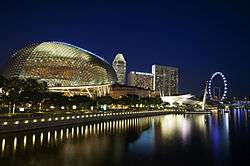

.jpg)
